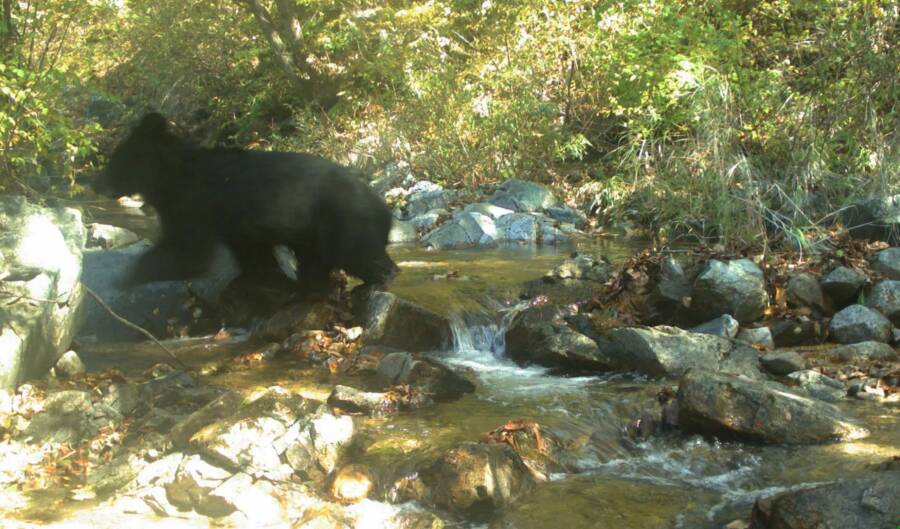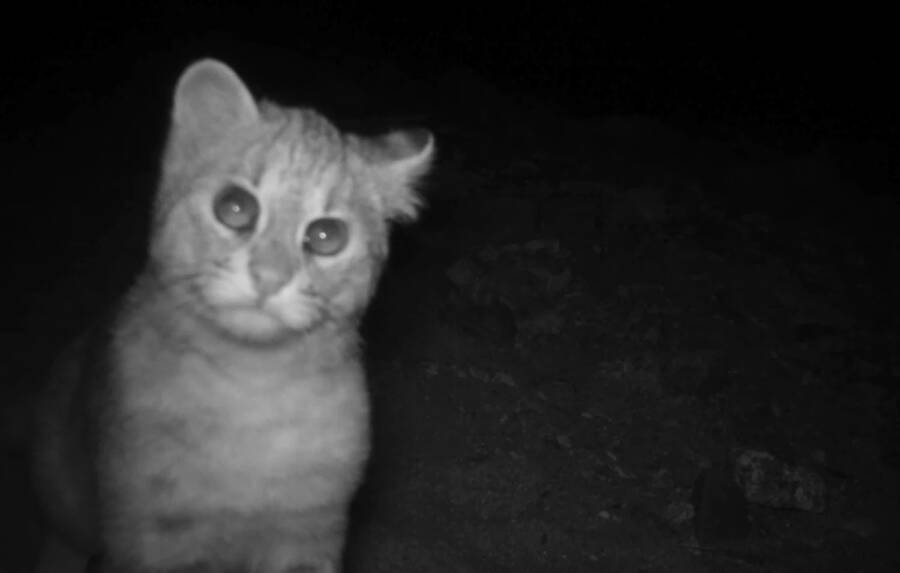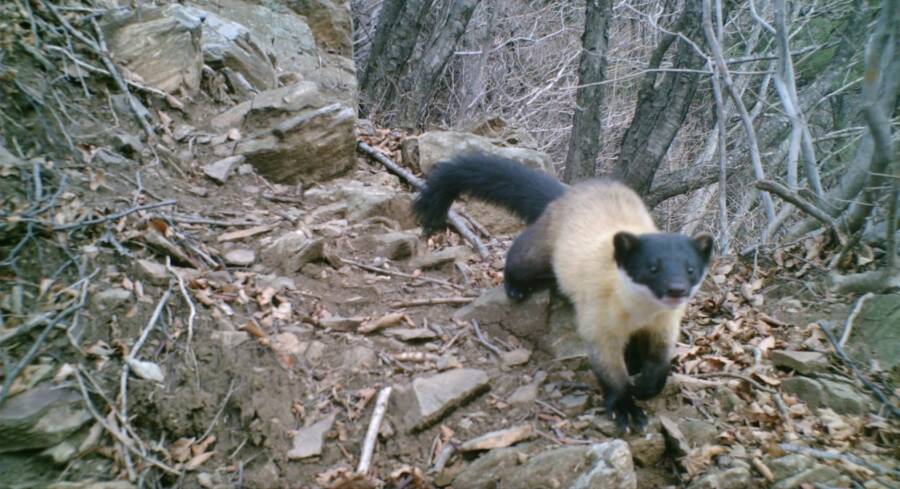Golden eagles, mountain goats, black bears, and more have thrived in the uninhabited Korean DMZ for the past 70 years.

National Institute of Ecology / Google Arts & CultureCameras in the Korean DMZ captured an Asiatic black bear for the first time in two decades.
The 160-mile stretch between North and South Korea known as the demilitarized zone (DMZ) is largely off-limits for people. But in the absence of humans, all kinds of wildlife have thrived. To mark the 70th anniversary of the Korean War armistice, Google has released rare images of the DMZ’s wildlife, ranging from mountain goats to black bears.
“After the Korean War, the DMZ had minimal human interference for over 70 years, and the damaged nature recovered on its own,” Google Arts and Culture explained. “As a result, it built up a new ecosystem not seen around the cities and has become a sanctuary for wildlife.”
Animals found in the DMZ include cranes, deer, trout, wildcats, and more. According to Google Arts and Culture, the zone contains 6,168 species, including 38 percent of Korean species that are considered endangered.
One of those species is the rare Asiatic black bear, which was captured on camera in the DMZ after eluding observers for twenty years. Another is the endangered musk deer, which lacks horns but has fangs in its upper jaw.

National Institute of Ecology / Google Arts & CultureThe endangered musk deer calls the Korean DMZ home.
The creatures have been thriving in the buffer zone between South and North Korea, which includes habitats ranging from grassy moors and river gorges to rocky mountains and tidal swamps. Though fences and land mines keep most people away, animals have flourished in the DMZ’s lush landscape since the Korean War ended in 1953.
“Have you wondered what the Han River, which now cuts through the heart of Seoul, might have looked like in its natural state 100 years ago?” Seo Jae-chul, an expert adviser at Green Korea United, said, according to London’s Natural History Museum. “You can see it at the DMZ, through the natural river banks and streams that are there.”

National Institute of Ecology / Google Arts & CultureA wildcat in the Korean DMZ caught on a night-vision camera.
The DMZ was created in 1953 at the close of the Korean War, which significantly ended with an armistice and not a peace deal. That means that the war between North and South Korea is technically still ongoing, and the DMZ acts as a buffer zone between the two countries.
The demilitarized zone covers an area about twice the size of New York City, as the Natural History Museum notes. But though animals are thriving within the zone, conservation efforts have been hindered by the enduring tension between the two countries.
As NBC reports, North and South Korea engaged in peace talks in 2018 that ecologists hoped would lead to a sharing of conservation responsibilities, and South Korea even opened a number of “peace trails” along the southern border of the DMZ in 2019.

National Institute of Ecology / Google Arts & CultureMany of the new wildlife photos released by Google were taken by unmanned cameras. Here, a yellow-throated marten darts past a camera.
But peace talks between the two nations have since fallen apart. Tensions between North and South Korea have been especially high in recent months, as North Korea engaged in a record-high number of weapons demonstrations in 2022, a trend continuing into this year.
In that way, the DMZ represents two opposing ideas at once. On the one hand, it represents the death and destruction of the Korean War, which continues to cast a large shadow over North and South Korean societies today. But on the other, the DMZ represents life and has allowed dozens of rare species to thrive outside of humanity’s reach.
“The DMZ region represents a sad history for the two Koreas,” Kim Seung-ho, the head of DMZ Ecology Research Institute, noted. “But it has been a rare haven for the many wildlife living there.”
After reading about the wildlife that’s thrived in the Korean DMZ, see what these North Korean propaganda posters say about Americans. Or, look through these heartbreaking photos from the Korean War.





